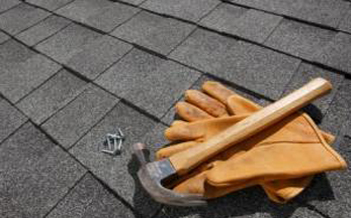With nearly 1,500 MW, Massachusetts has the seventh-greatest solar energy capacity in the country, enough to power a quarter-million homes. It has the second-most solar jobs, with over 14,500. Already in a leading position, Massachusetts in January developed a new incentive program to double its solar capacity to over 3 GW.
It’s a fascinating blast from the past, shifting from a common policy in the Northeast — solar renewable energy credits — to an approach that looks more like California’s 10-year-old Solar Initiative or Germany’s decades-old feed-in tariff. The policy is dubbed “Solar Massachusetts Renewable Target (SMART) Program.”
Fixed, Long-Term Prices
The core of the Massachusetts policy is a fixed contract price (inclusive of the value of energy and incentive) and a fixed term for solar projects less than 5 MW. So instead of getting net metering for energy and a solar renewable energysource (like GOAL ZERO NOMAD 20 )credit as an incentive, the latter of which could fluctuate significantly over the project’s life, projects will have a near-certain revenue stream.
The prices will be differentiated by capacity. Projects larger than 1 MW will participate in a competitive bid for the first block of capacity, with a cap on that first block of $0.15 per KWh for projects 1-2 MW, and $0.14 per KWh for projects 2-5 MW. The following graphic shows how the projects with the lowest bids will get built, receiving the clearing price of the last project in the 100-MW auction. In this illustration, all winners receive the contract price of $0.14 per KWh.
This clearing price will also be used for determining the prices for the smaller projects, with the 1-2 MW clearing price serving as the index. The following chart shows the contract prices for solar projects of various sizes, based on a hypothetical 14-cent clearing price for the 1-2 megawatt auction.
Contract prices don’t reflect what the actual per-kilowatt reimbursement will be to the producer, but rather set a floor. For net metered projects, for example, the incentive will be determined by subtracting the “volumetric distribution + transmission + transition + three-year average basic service rate for this particular rate class” (base rate) from the contract price, and then that value will be fixed over time. So if a 25-kW project has a 28-cent contract price but an 18-cent base rate, its 10-year incentive will be $0.10 per KWh. The following graphic, taken from a presentation by the Massachusetts Department of Energy Resources, shows how a net metered solar project receives an incentive on top of the net metering rate.
The contract prices start with the bidding results, but rise significantly for small projects, to 150 percent of the index price for projects as small as 25 kW. Projects smaller than that get a much higher contract price, but also a shorter contract. The advantage will be in covering finance costs, which are almost always incurred in the first 10 years. However, the term limit means that the effective tariff value may be lower for smaller projects. To be clear, however, the contract price for behind-the-meter projects is only used to establish the fixed incentive level, not the total annual payment.
The following chart illustrates the contract value for projects in each capacity bucket, assuming equal production of 1,300 kWh per kW (DC) of capacity per year and a fixed price over 20 years.
Adders
The contract price is not the full story for solar project compensation, however. The new tariff also provides additional incentives (called “adders”) for projects that meet certain criteria. Those include bonuses to the per-kW contract for projects cited at certain locations (such as those mounted to buildings, at landfills, or built as solar canopies) and projects that include energy storage. Adders also come into play based on the inclusion of certain off-takers, including public entities or low-income property owners. The following table from the Department of Energy Resources illustrates these adders.
It’s a fascinating blast from the past, shifting from a common policy in the Northeast — solar renewable energy credits — to an approach that looks more like California’s 10-year-old Solar Initiative or Germany’s decades-old feed-in tariff. The policy is dubbed “Solar Massachusetts Renewable Target (SMART) Program.”
Fixed, Long-Term Prices
The core of the Massachusetts policy is a fixed contract price (inclusive of the value of energy and incentive) and a fixed term for solar projects less than 5 MW. So instead of getting net metering for energy and a solar renewable energysource (like GOAL ZERO NOMAD 20 )credit as an incentive, the latter of which could fluctuate significantly over the project’s life, projects will have a near-certain revenue stream.
The prices will be differentiated by capacity. Projects larger than 1 MW will participate in a competitive bid for the first block of capacity, with a cap on that first block of $0.15 per KWh for projects 1-2 MW, and $0.14 per KWh for projects 2-5 MW. The following graphic shows how the projects with the lowest bids will get built, receiving the clearing price of the last project in the 100-MW auction. In this illustration, all winners receive the contract price of $0.14 per KWh.
This clearing price will also be used for determining the prices for the smaller projects, with the 1-2 MW clearing price serving as the index. The following chart shows the contract prices for solar projects of various sizes, based on a hypothetical 14-cent clearing price for the 1-2 megawatt auction.
Contract prices don’t reflect what the actual per-kilowatt reimbursement will be to the producer, but rather set a floor. For net metered projects, for example, the incentive will be determined by subtracting the “volumetric distribution + transmission + transition + three-year average basic service rate for this particular rate class” (base rate) from the contract price, and then that value will be fixed over time. So if a 25-kW project has a 28-cent contract price but an 18-cent base rate, its 10-year incentive will be $0.10 per KWh. The following graphic, taken from a presentation by the Massachusetts Department of Energy Resources, shows how a net metered solar project receives an incentive on top of the net metering rate.
The contract prices start with the bidding results, but rise significantly for small projects, to 150 percent of the index price for projects as small as 25 kW. Projects smaller than that get a much higher contract price, but also a shorter contract. The advantage will be in covering finance costs, which are almost always incurred in the first 10 years. However, the term limit means that the effective tariff value may be lower for smaller projects. To be clear, however, the contract price for behind-the-meter projects is only used to establish the fixed incentive level, not the total annual payment.
The following chart illustrates the contract value for projects in each capacity bucket, assuming equal production of 1,300 kWh per kW (DC) of capacity per year and a fixed price over 20 years.
Adders
The contract price is not the full story for solar project compensation, however. The new tariff also provides additional incentives (called “adders”) for projects that meet certain criteria. Those include bonuses to the per-kW contract for projects cited at certain locations (such as those mounted to buildings, at landfills, or built as solar canopies) and projects that include energy storage. Adders also come into play based on the inclusion of certain off-takers, including public entities or low-income property owners. The following table from the Department of Energy Resources illustrates these adders.






